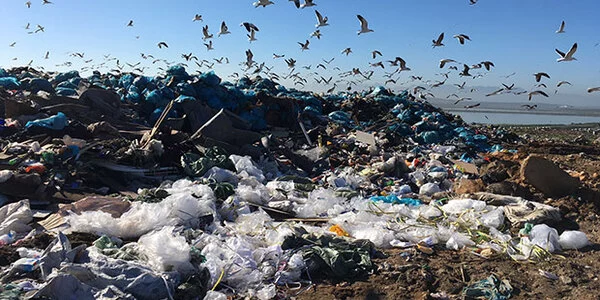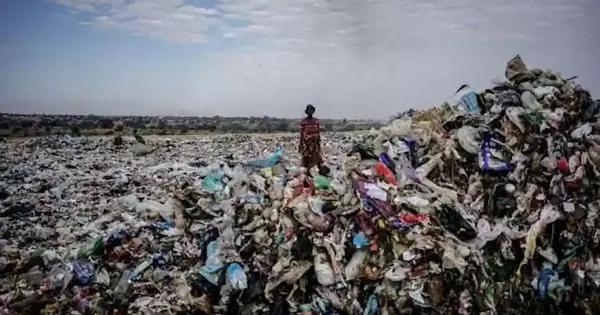Plastics are among the most versatile and malleable materials ever devised by humanity. However, one of their distinguishing features, longevity, makes them a potential long-term contaminant. It doesn’t take much to perceive the visual impact of wasted plastics. Plastic trash may be found everywhere, in towns and rural areas, in the shape of discarded bottles, supermarket bags, electronics packaging, and much more. Those plastics aren’t going away anytime soon.
It is not uncommon to come upon decades-old plastic debris on the seafloor or in a stream. After all, billions of single-use plastics are consumed every day, and irresponsible people dump their rubbish in rivers and seas. The more those plastic waste surfaces, the more people realize that that plastic won’t decompose even after being buried for a very long time.
When exposed to UV light, scientists discovered that adding sugar units into polymers made them more degradable. Many biodegradable plastics are only compostable under industrial circumstances, but scientists at the University of Bath have discovered a way to break down plastics using only UV light.
PLA (Poly(lactic acid)), a renewable, sustainable alternative to plastics derived from crude oil products, is now widely utilized as a renewable, sustainable alternative to plastics derived from crude oil products, used in everything from throwaway cups and teabags to 3D printing and packaging.
Lots of plastics are labeled as biodegradable, but this is only true if you dispose of it in an industrial waste composter; if put into residential compost heaps, it can last for years. Most PLA plastics are composed of lengthy polymer chains that are tough for water and enzymes to degrade. Our research incorporates sugars into polymer chains, which are held together by bonds that can be broken with UV radiation.
Dr. Antoine Buchard
It is frequently labeled as biodegradable, however its degradability in natural environments, such as soil or seawater, is restricted, and it only degrades under industrial composting conditions of high temperatures and humidity, which are not feasible in residential compost heaps.
Scientists at the University of Bath’s Centre for Sustainable and Circular Technologies (CSCT) have found a method that could make these plastics more biodegradable in the natural environment. The researchers discovered that by inserting varying amounts of sugar molecules into the polymer, they may alter the degradability of the plastic.
They discovered that integrating as little as 3% sugar polymer units into PLA resulted in 40% breakdown after six hours of UV light exposure. The technology is most promising since it is compatible with existing plastic manufacturing processes, which means it may be tested and deployed swiftly by the plastics sector.
The researchers, who published their findings in Chemical Communications, expect that their discoveries will be used in the future by the plastics industry to help make plastic trash more degradable at the end of the product’s life.

The research was headed by Dr. Antoine Buchard, Royal Society University Research Fellow and Reader in Polymer Chemistry at the CSCT, and was funded by the Royal Society.
“Lots of plastics are labeled as biodegradable, but this is only true if you dispose of it in an industrial waste composter; if put into residential compost heaps, it can last for years,” he explained. Most PLA plastics are composed of lengthy polymer chains that are tough for water and enzymes to degrade. Our research incorporates sugars into polymer chains, which are held together by bonds that can be broken with UV radiation.
“This weakens the plastic, breaking it down into smaller polymer chains that are subsequently more vulnerable to hydrolysis.” This could make the plastic considerably more biodegradable in the natural environment, such as the ocean or a backyard compost heap. Previously, scientists looked at increasing the degradability of PLA to water (hydrolysis), but this is the first time anyone has looked at using light.”
“This method needs to be transferred to real-life plastics products and tested with sunlight, but we think our technology can be utilized in the future to manufacture plastics that are robust when you use them but can break down quickly when reuse and recycling are no longer available.”
Currently, photodegradable polymers are extremely effective in cases involving intentional or unintentional littering. So, for grocery sacks that blow into Grand Teton National Park, there is some hope that the sun will ultimately take its toll.
In the end, biodegradable plastic is merely one type of answer to a larger problem: how can we humans deal with all of the plastic rubbish we generate? Right now, reusing and recycling are our greatest options, but if plastics do escape from prison and end up in the environment, it’s important to realize that degradable plastics may not last as long as older types of polymer materials.
















